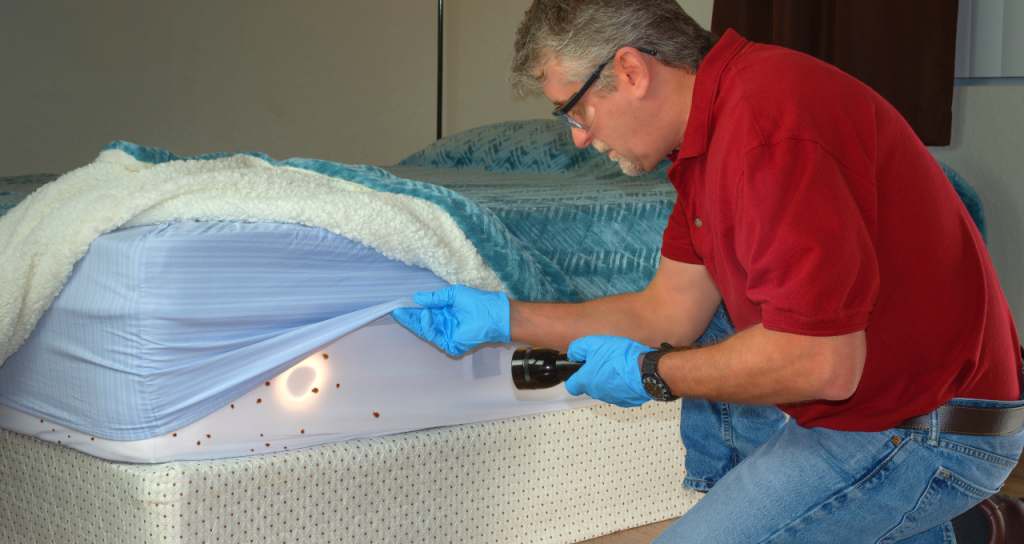
Can a New Mattress Have Bed Bugs?
Discover the unsettling truth about bed bugs lurking in your brand-new mattress and learn essential tips to safeguard your sleep haven in this informative guide.
Sleep Safe and Sound
Bed bugs, scientifically known as Cimex lectularius, are small, wingless insects that feed on the blood of humans and animals. They are notorious for their stealthy nature and ability to hide in tiny crevices.
Bed bugs are more than just a nuisance; they’re a genuine health concern. Their bites can lead to itchy welts, allergic reactions, and even psychological distress. Moreover, they are incredibly resilient and challenging to eliminate once they infest your home.
Bed bugs are a growing concern for many people, and it’s natural to assume that a new mattress is bed bug-free. However, the reality is that bed bugs can infest a new mattress, causing discomfort, stress, and financial loss. According to the National Pest Management Association, 99% of pest control professionals have treated bed bug infestations in the past year. In fact, the average cost of treating a bed bug infestation is around $1,300. With this in mind, it’s crucial to understand how bed bugs can infest a new mattress and what steps to take to prevent it.
Table of Contents
ToggleCan a New Mattress Have Bed Bugs?
The short answer is yes, a new mattress can have bed bugs. While it might seem counterintuitive, these pests can find their way into your home through various avenues, including the manufacturing and delivery process.
How Do Bed Bugs Infest New Mattresses?
- During Manufacturing:
Bed bugs can infest a mattress at the manufacturing facility. They may hitch a ride on materials or machinery and find a cozy spot within the layers of the mattress.
- During Storage:
Mattresses often spend time in storage facilities or warehouses before reaching your home. Bed bugs can sneak into these storage areas and make their way into your mattress.
- During Delivery:
If the delivery process involves multiple stops or transfers, bed bugs could potentially find their way into your mattress during transit.
Signs of Bed Bugs in a New Mattress
Detecting bed bugs in a new mattress requires a keen eye. Look out for these telltale signs:
- Tiny reddish-brown bugs or their shed exoskeletons.
- Small, rust-colored stains on the mattress.
- Itchy bites on your skin, often arranged in a linear pattern.
Prevention and Protection
- Pre-Purchase Inspection
Before buying a new mattress, take these precautionary steps:
Inspect the mattress seams and edges for any signs of bed bugs.
Inquire with the retailer about their pest control measures.
- Mattress Encasements
Invest in high-quality mattress encasements. These covers not only protect your mattress from bed bugs but also safeguard against dust mites and allergens.
- Delivery Precautions
When your new mattress arrives:
Inspect it thoroughly before accepting delivery.
If you suspect any issues, contact the retailer immediately.
What to Do if You Suspect Bed Bugs?
- Don’t Panic
Discovering bed bugs in your new mattress can be distressing, but it’s essential to stay calm and take action promptly.
- Isolate the Mattress
Isolate the potentially infested mattress to prevent bed bugs from spreading to other parts of your home.
- Contact a Pest Control Professional
Seek the assistance of a licensed pest control expert. Bed bug infestations are challenging to handle without professional intervention.
Mattress Maintenance Tips
- Regular Inspection
Make it a habit to inspect your mattress regularly, even if it’s new. Early detection is key to preventing a full-blown infestation.
- Vacuuming
Regularly vacuum your mattress and its surroundings to capture any lurking bed bugs.
- Launder Bedding
Wash your bedding, including sheets, pillowcases, and mattress covers, in hot water regularly.
Final Words
While the thought of bed bugs in a new mattress might send shivers down your spine, it’s a possibility that shouldn’t be ignored. Vigilance and preventive measures are your best allies in keeping these pests at bay. Remember, a good night’s sleep is essential for your well-being, and with the right precautions, you can rest easy on your clean, comfortable, and bed bug-free mattress.
So, can a new mattress have bed bugs? Yes, but with knowledge and action, you can ensure that your new mattress remains a haven of peaceful slumber, free from unwanted intruders.
Frequently Asked Questions
A new mattress is unlikely to have bed bugs, as they are typically found in used or refurbished mattresses. However, it is still possible for bed bugs to infest a new mattress if it is not properly inspected and sealed. To prevent this, use a bed bug-proof encasement and follow proper cleaning and maintenance procedures.
To check a new mattress for bed bugs, carefully inspect the mattress, box spring, and bed frame for signs of an infestation. Look for live bed bugs, shell casings, eggs, dark-colored fecal stains, and small blood spots on the sheets. Pay close attention to the mattress seams, folds, and corners, as well as any cracks or crevices in the bed frame where bed bugs may hide.
To ensure your mattress is bed bug-free, regularly inspect it for signs of infestation, such as small red or brown spots, eggs, or shed skins. Keep your bedroom clean and clutter-free, and use a mattress protector to prevent bed bugs from entering or escaping. Additionally, vacuum your mattress thoroughly and wash and dry your bedding on high heat to kill any bed bugs.
Bed bugs can infest a mattress quickly. It typically takes around 10 days for bed bug eggs to hatch and for nymphs to mature. After that, they can start reproducing and spreading the infestation within a few weeks.
